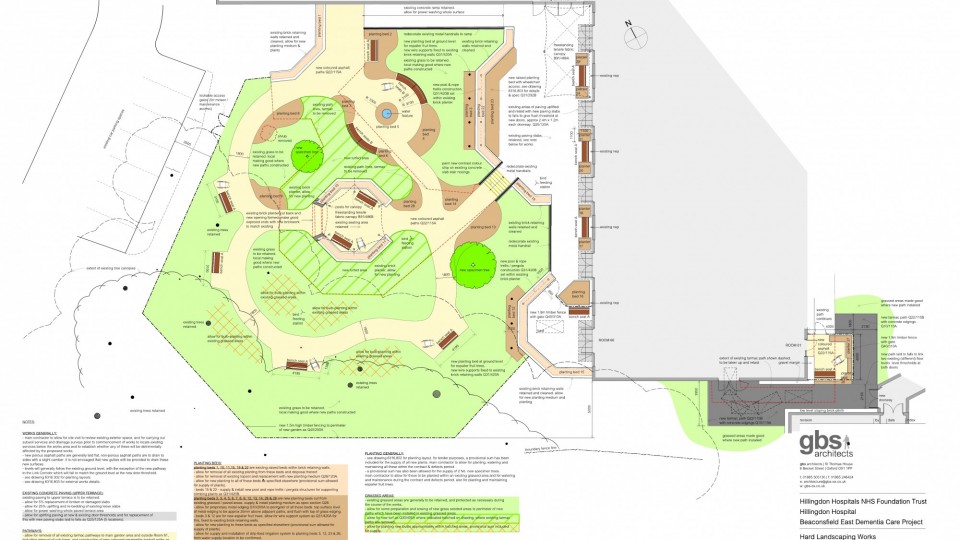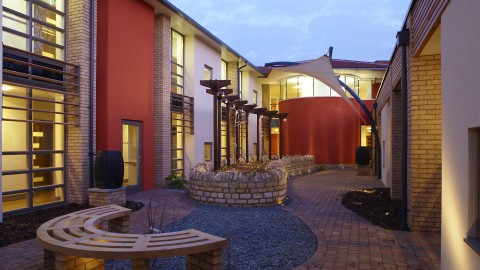A fragrant and vibrant new sensory garden forms the centrepiece of the dementia friendly refurbishment of Beaconsfield East Ward: a 20 bed rehabilitation ward at Hillingdon Hospital for older adults, many of whom have dementia.
During the consultation process with staff, service users and their families, the less travelled last bed bay and side room of the ward were identified as a ‘tender care’ area. This instigated a palliative care approach for the design of the last side room with the addition of a private courtyard garden, separate from the main garden, where the patient and loved ones can enjoy some air with privacy.
The main garden is split across two levels, the upper terrace and the lower garden, connected via a wide ramp and staircase. Views out to the landscape are now considered to be an essential part of a healthy holistic environment and upon arrival on the ward there are direct sightlines through to the garden. The bed bays and day room all have glazed doors with lowered thresholds opening directly on to the upper terrace.
A sheltered seating area has been created under a sail like structure outside the day room on the upper terrace. Planters line the bed bay openings to add interest to the views from patients’ beds, whilst a small section of the terrace outside the ‘tender care’ bay was concealed with a gate and planting to provide a space for external palliative care to be given in private.
The lower garden can be glimpsed from the upper terrace by the installation of a wheelchair accessible Juliette balcony and perching benches. This takes the view from the ward reception right through to the lower garden, where there is a Victorian lamppost feature and Ginko tree – Ginko is used in Chinese medicine for memory loss.
The lower garden provides a variety of sensory experiences at all heights as patients and visitors traverse a curved, buff-coloured tarmac pathway forming a dementia friendly ‘wander loop’ past planted beds of rustling grasses, vivid colours, tactile textures and pleasing fragrances. All the flowers and plants on the artworks within the ward can be found in the garden, connecting the two spaces.
The route is interspersed with seating areas of different character, open and covered and passes by the edge of a group of existing mature trees with under planting of grass and spring bulbs creating a woodland feel.
Flowering and espalier fruit trees have been incorporated together with traditional garden plants and raised beds intended for therapeutic use; all to create a sense of enjoyment and familiarity among the elderly patients.
The garden is lit at night via daylight sensors, whilst the decorative open topped fence provides safe containment within sight of the nursing staff without losing contact with the wider external environment beyond.
Highly Commended at the Building Better Healthcare Awards 2014, for Best External Environment in the Patient Experience Class. The judges said: "The design has been specifically tailored to the needs of patients with dementia and cognitive problems and their visitors. We particularly liked the inclusion of a private garden for pallative care patients."

